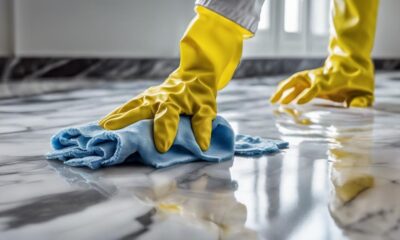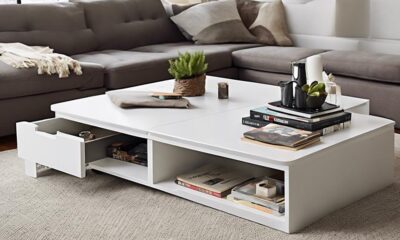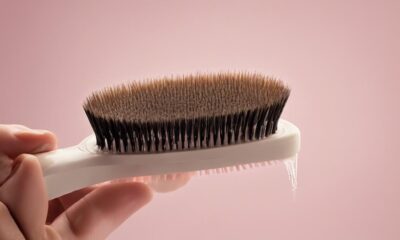Beginners Guides
Pellet Stove Glass Turns Black
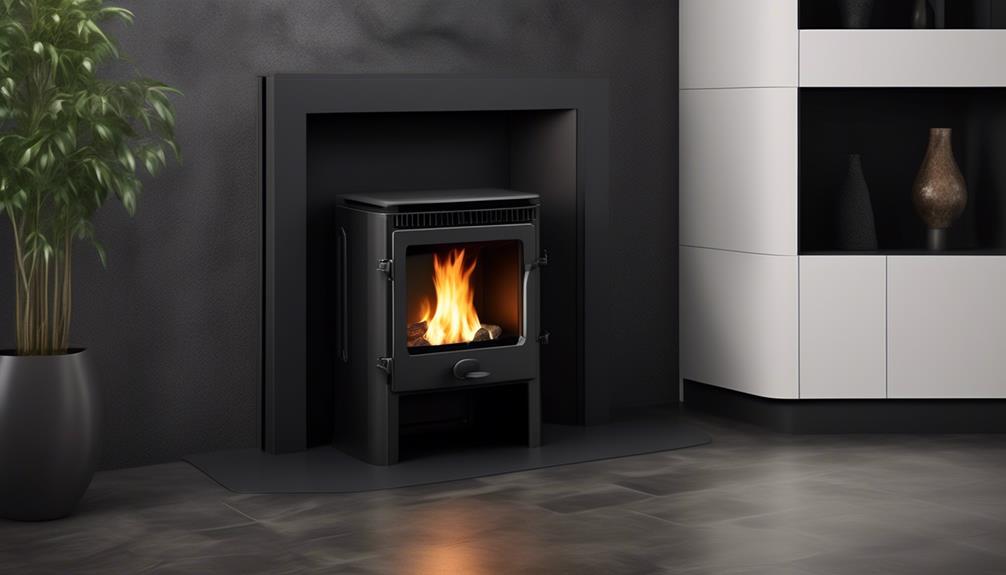
Have you ever experienced the frustration of your pellet stove glass suddenly turning black when you need it to be clear? It can feel like a game of hide and seek. Many pellet stove owners can relate to this issue, but there are practical solutions we will explore.
From understanding the common reasons for blackened pellet stove glass to effective cleaning techniques and maintenance practices, we've got you covered.
So, if you want to enjoy a consistently clear view of those flickering flames, stick around for some expert insights and practical tips.
Key Takeaways
- Blackened pellet stove glass can be caused by a buildup of creosote and soot from incomplete combustion.
- Regular maintenance of the glass, including cleaning with a recommended glass cleaner, is important to prevent blackening.
- Using high-quality fuel designed for clean burning can help prevent blackening of pellet stove glass.
- Seeking professional assistance from certified technicians or specialists can be helpful in dealing with blackened stove glass.
Common Reasons for Blackened Pellet Stove Glass
One common reason for pellet stove glass turning black is due to a buildup of creosote and soot from incomplete combustion. This occurs when the stove isn't burning the fuel completely, leading to the release of unburned byproducts that stick to the glass.
To prevent this, it's crucial to ensure proper maintenance of the glass. Regular cleaning and inspection can help remove any buildup before it becomes problematic.
Additionally, using high-quality fuel is essential. Poor quality pellets can contribute to incomplete combustion, leading to more creosote and soot production. Therefore, it's important to invest in good quality fuel to maintain the efficiency of the pellet stove and reduce the likelihood of blackened glass.
Tips for Preventing Pellet Stove Glass Blackening

To prevent blackening of pellet stove glass, regular maintenance and using high-quality fuel are essential. Here are some tips for maintaining clear pellet stove glass:
- Glass Maintenance
- Clean the glass regularly using a recommended glass cleaner to remove any soot or residue buildup. This will help prevent the glass from turning black and maintain its transparency.
- Check the gaskets and seals around the glass to ensure they're intact and properly sealing the door. Leaks can lead to improper combustion and increased soot accumulation on the glass.
- Pellet Quality
- Use high-quality pellets that are specifically designed for clean and efficient burning. Low-quality pellets can produce more ash and soot, leading to quicker blackening of the glass.
- Store the pellets in a dry and clean environment to prevent contamination and maintain their quality.
Cleaning Techniques for Blackened Pellet Stove Glass
Using a high-quality glass cleaner is essential for effectively removing soot and residue buildup from blackened pellet stove glass. However, there are also several DIY cleaning techniques and natural solutions that can be used to tackle this issue.
One popular natural solution is to mix equal parts water and vinegar in a spray bottle. This solution can be sprayed onto the blackened glass and then wiped away with a clean cloth.
Another effective natural cleaner is to use a paste made from baking soda and water. The paste can be applied to the glass, left for a few minutes, and then wiped off with a damp cloth.
For tougher stains, especially those that have been left to accumulate over time, a commercial stove glass cleaner may be necessary. These cleaners are specifically formulated to cut through the tough carbon deposits without damaging the glass.
When using any cleaner, it's important to follow the manufacturer's instructions carefully to ensure the best results and to avoid any damage to the glass surface. Regular cleaning and maintenance can help prevent the glass from turning black in the future.
Maintenance Practices for Clear Pellet Stove Glass

Regularly cleaning and inspecting pellet stove glass is essential for maintaining its clarity and ensuring efficient stove operation. To keep your pellet stove glass clear, follow these maintenance practices:
- Proper Cleaning Techniques:
- Use a designated glass cleaner or a mixture of vinegar and water for effective cleaning without leaving streaks or residue.
- Gently scrub the glass with a non-abrasive material to avoid scratches or damage to the surface.
- Ensure the glass is completely dry before reusing the stove to prevent water spots or streaking.
- Regular Inspections:
- Check the glass for any signs of soot, creosote buildup, or discoloration on a weekly basis.
- Inspect the gaskets and seals around the glass to ensure they're intact and functioning properly.
- Address any issues promptly to prevent them from escalating and affecting the stove's performance.
- Annual Professional Maintenance:
- Schedule an annual inspection and cleaning by a qualified technician to address any internal components that may impact the glass clarity.
- Professional maintenance helps to identify and resolve potential issues before they compromise the stove's efficiency.
Following these glass maintenance and clear glass upkeep practices won't only ensure a clean and clear view of the fire but also contribute to the longevity and optimal performance of your pellet stove.
Professional Assistance for Blackened Stove Glass
After maintaining our pellet stove glass, we noticed it turning black and sought professional assistance to address the issue promptly. When facing blackened stove glass, it's crucial to consider professional help for effective troubleshooting techniques. Consulting with a professional can provide valuable insights into the root cause of the blackening, ensuring that the issue is addressed comprehensively.
| Professional Help | Troubleshooting Techniques |
|---|---|
| Seek assistance from a certified technician | Evaluate the air-to-fuel ratio |
| Contact the stove manufacturer for guidance | Inspect the combustion system |
| Engage with a fireplace and chimney specialist | Clean the stove and exhaust system thoroughly |
| Look for a professional chimney sweep | Check for proper ventilation and airflow |
| Consider consulting with a heating system expert | Assess the quality of pellets used |
Professional assistance offers the expertise and experience needed to diagnose and resolve the blackened stove glass issue effectively. By utilizing troubleshooting techniques recommended by professionals, one can ensure that the pellet stove operates efficiently, promoting clear and clean glass.
Frequently Asked Questions
Can Blackened Pellet Stove Glass Be a Fire Hazard?
Blackened pellet stove glass can pose a fire hazard if left unaddressed. Regular cleaning is crucial to prevent potential risks. We recommend using appropriate cleaning techniques and products to remove the buildup.
Neglecting this issue could lead to increased heat retention in the stove, potentially causing a fire hazard. Taking proactive measures to keep the glass clean and clear is essential for maintaining a safe and efficient pellet stove.
Are There Any Health Concerns Associated With Blackened Pellet Stove Glass?
Health concerns related to blackened pellet stove glass can be significant. The soot buildup may release harmful particles, impacting indoor air quality. Cleaning methods are crucial to prevent these issues.
Regular maintenance and proper ventilation can mitigate health risks. Seek professional assistance if the blackening persists despite cleaning efforts.
Prioritize safety and consider alternative heating sources if health concerns persist. Regular cleaning and maintenance are essential for a healthy indoor environment.
How Does Blackened Pellet Stove Glass Affect the Efficiency of the Stove?
Blackened pellet stove glass reduces heating efficiency by blocking the view of the flames, hindering heat transfer into the room.
Additionally, it can negatively impact air quality by indicating incomplete combustion, releasing more pollutants into the air.
Regular cleaning and maintenance are crucial to ensure optimal stove performance and to minimize any adverse effects on both heating efficiency and air quality.
Can Using a Different Type of Pellet Fuel Prevent Blackening of the Stove Glass?
Using different fuels can prevent blackening of the stove glass. We've found that experimenting with various pellet types and qualities can significantly impact glass clarity.
Regularly cleaning the glass and maintaining a proper maintenance schedule are also crucial. This not only enhances the stove's aesthetic appeal but also improves fuel efficiency.
It's like finding the perfect blend of ingredients to create a masterpiece dish – the right fuel makes all the difference.
Are There Any Specific Environmental Impacts of Blackened Pellet Stove Glass?
Environmental impact of blackened pellet stove glass can include reduced efficiency and increased emissions due to incomplete combustion. Maintenance tips to mitigate this impact involve regular cleaning and using high-quality pellet fuel.
Proper maintenance can help ensure optimal performance, reducing environmental impact and improving air quality. It's essential to prioritize these steps to minimize the negative effects of blackened stove glass on the environment and overall stove performance.
Can Boiled Vinegar be Used to Clean Pellet Stove Glass?
Yes, boiled vinegar can be used to clean pellet stove glass. However, it’s important to be mindful of boiled vinegar safety concerns. Ensure proper ventilation and use protective gloves to avoid skin irritation. The acidic nature of vinegar can effectively remove soot and buildup on the glass, leaving it sparkling clean.
Conclusion
In conclusion, keeping your pellet stove glass clear as a crystal lake takes effort and regular maintenance. By following our tips and cleaning techniques, you can prevent your glass from turning as black as a moonless night.
Remember, a little bit of care goes a long way in maintaining a warm and inviting atmosphere in your home. So, don't let the darkness take over – keep your pellet stove glass sparkling like a starry sky.
- About the Author
- Latest Posts
Introducing Ron, the home decor aficionado at ByRetreat, whose passion for creating beautiful and inviting spaces is at the heart of his work. With his deep knowledge of home decor and his innate sense of style, Ron brings a wealth of expertise and a keen eye for detail to the ByRetreat team.
Ron’s love for home decor goes beyond aesthetics; he understands that our surroundings play a significant role in our overall well-being and productivity. With this in mind, Ron is dedicated to transforming remote workspaces into havens of comfort, functionality, and beauty.
Beginners Guides
Tips for Painting a Couch
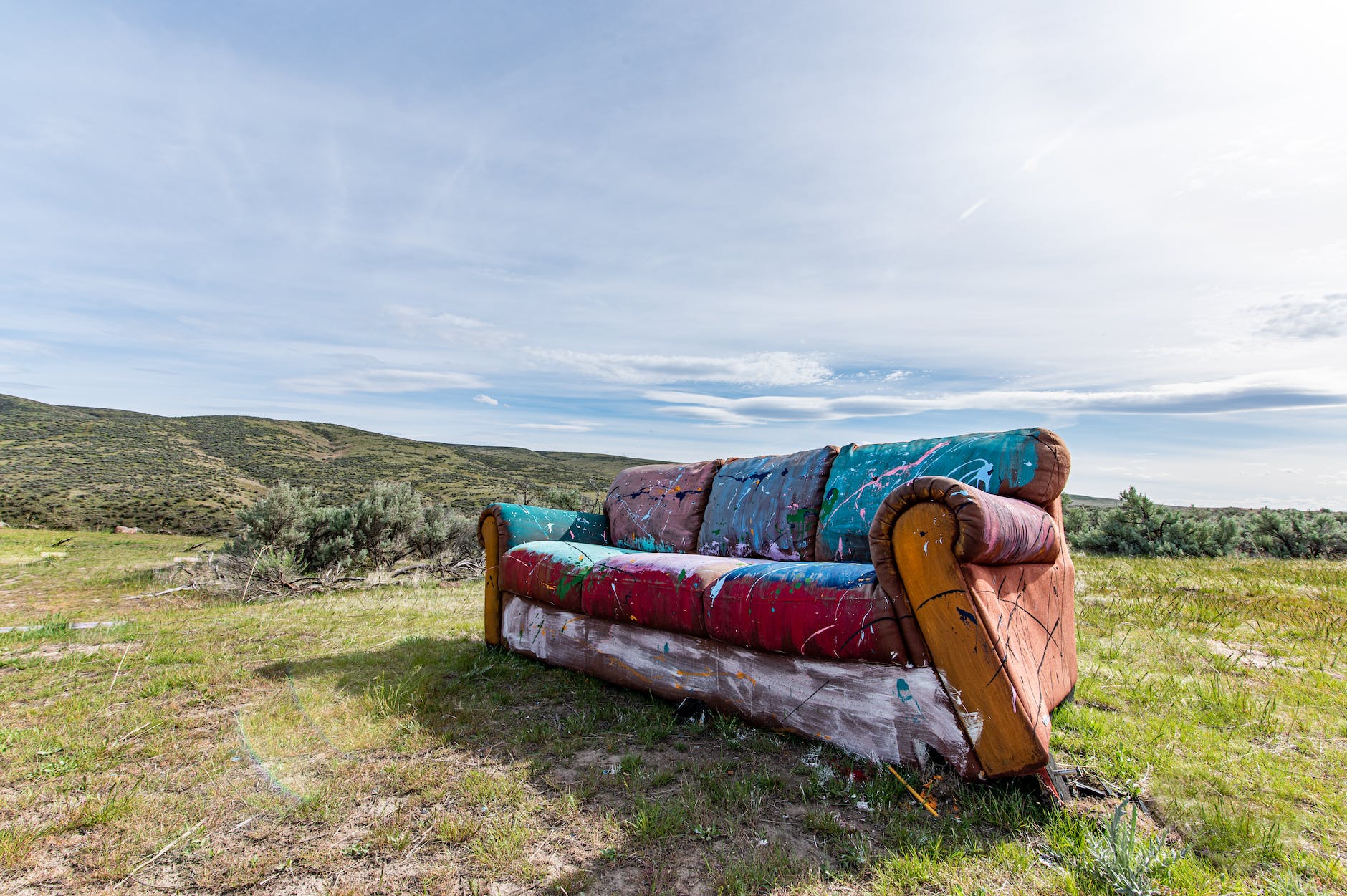
Here are some crucial pointers, whether you are painting a sofa or altering its color. It is essential to utilize only high-quality paint. Paint composed of low-quality materials will not yield the same results and will likely crack once dried. For upholstery, it is recommended to use fabric paint for optimal results. This will provide a seamless finish without making the sofa feel stiff.

Chalk paint on a couch
Before applying chalk paint on a couch, it is important to prepare the surface. To remove paint, use Goo Gone and wash the surface with warm water. Dry the piece completely. Lightly sand any areas that are rough with 220 grit paper. The entire couch doesn’t have to be sanded.
After you have prepared the surface you can paint the couch. A spray bottle or a brush are the best tools for applying the paint. This will allow the paint to penetrate fabric fibers. Even after multiple coats, it will last for years. To reach into buttons and crevices, you can use a paintbrush. Between coats, let the fabric dry completely. To protect your couch, apply a clear wax.
Oil-based paint
If you are looking for a long-lasting finish, oil-based paint is the best choice. It adheres to most surfaces and leaves a rich, lacquer-like appearance. This is the best option for high-traffic areas like a couch. You can also get this type of paint in flat, satin, or glossy finishes.
Before you start painting, be sure to understand the differences between oil and water-based paints. Water-based paint won’t stick well to oil-based paintings. Use rubbing alcohol to test the paint’s adhesion. Dip a white cloth in rubbing alcohol, and rub the wall with it. Water-based paints will transfer to a clean cloth easily, while oil-based paints will not.
Use fabric paint
If you want to paint your couch using fabric paint, you will need some basic tools. To paint the upholstery with fabric paint, you will need a nylon paintbrush, a drop cloth and a paint container. To add durability and prevent the paint from peeling, you may use sealing wax. To ensure that the paint spreads evenly, you may want to dampen your fabric with plain water.
After you’ve painted your couch, allow it to dry completely before applying the second layer. You should wait no more than an hour between each coat to ensure the paint does not dry too quickly.
Sanding
These are some helpful tips for painting a couch. Preparing furniture for painting is as simple as sanding. This is essential as you will want to inspect the final product before you start. It is important that you see the finished piece before you start painting.
Sanding furniture is crucial to ensure paint adheres properly. This will ensure that your new coat of paint will adhere to the furniture with a smooth and even finish. The furniture can be sanded with either an orbital or hand sander, depending on its condition. You will need 150-grit Sandpaper for this step. You can also use sanding blocks to reach hard-to-reach places.
Use a tack cloth
You can make your own tackcloth if you don’t have enough money to purchase a professional painter’s cloth. The basic cloth should measure approximately twelve by twenty-four inches. It doesn’t matter what size you choose. Just soak it in water, then dry it. Fold it in multiple layers.
It is not difficult to choose a tackcloth, but it is essential to do your research. It is crucial to make sure that the tackcloth doesn’t leave wax residue after drying, and doesn’t bleed paint. Tack cloths are suitable for small projects but professionals might prefer them for larger surfaces.
Use milk paint to cover a couch
Milk paint is a great way to give your couch a distressed appearance. Milk paint, which is thinner than regular paint, leaves the wood grains visible. This allows you to layer and distress. This can be applied to a sofa or couch with ease.
The first coat may appear streaky. Apply another coat to even out the color. Remember that milk paint can be porous so it must be sealed. It’s easy and shouldn’t take too much time.
Oil-based paint for leather couches
Oil-based paints can stain leather couches. There are methods to clean it. First, you need to dissolve the oil in the paint with a special solvent. This should remove most of the stain. Hydrogen peroxide can also be used to remove stubborn stains.
It is harder to remove oil-based paint than water-based. It is important to remove all paint from your couch. It’s not difficult if you act quickly. Once the paint dries, it will be more difficult to remove. Most paint stains can be removed with olive oil and soap. If you have a stubborn stain you can use an edged tool.
- About the Author
- Latest Posts
Introducing Ron, the home decor aficionado at ByRetreat, whose passion for creating beautiful and inviting spaces is at the heart of his work. With his deep knowledge of home decor and his innate sense of style, Ron brings a wealth of expertise and a keen eye for detail to the ByRetreat team.
Ron’s love for home decor goes beyond aesthetics; he understands that our surroundings play a significant role in our overall well-being and productivity. With this in mind, Ron is dedicated to transforming remote workspaces into havens of comfort, functionality, and beauty.
Beginners Guides
Craft Paint Storage
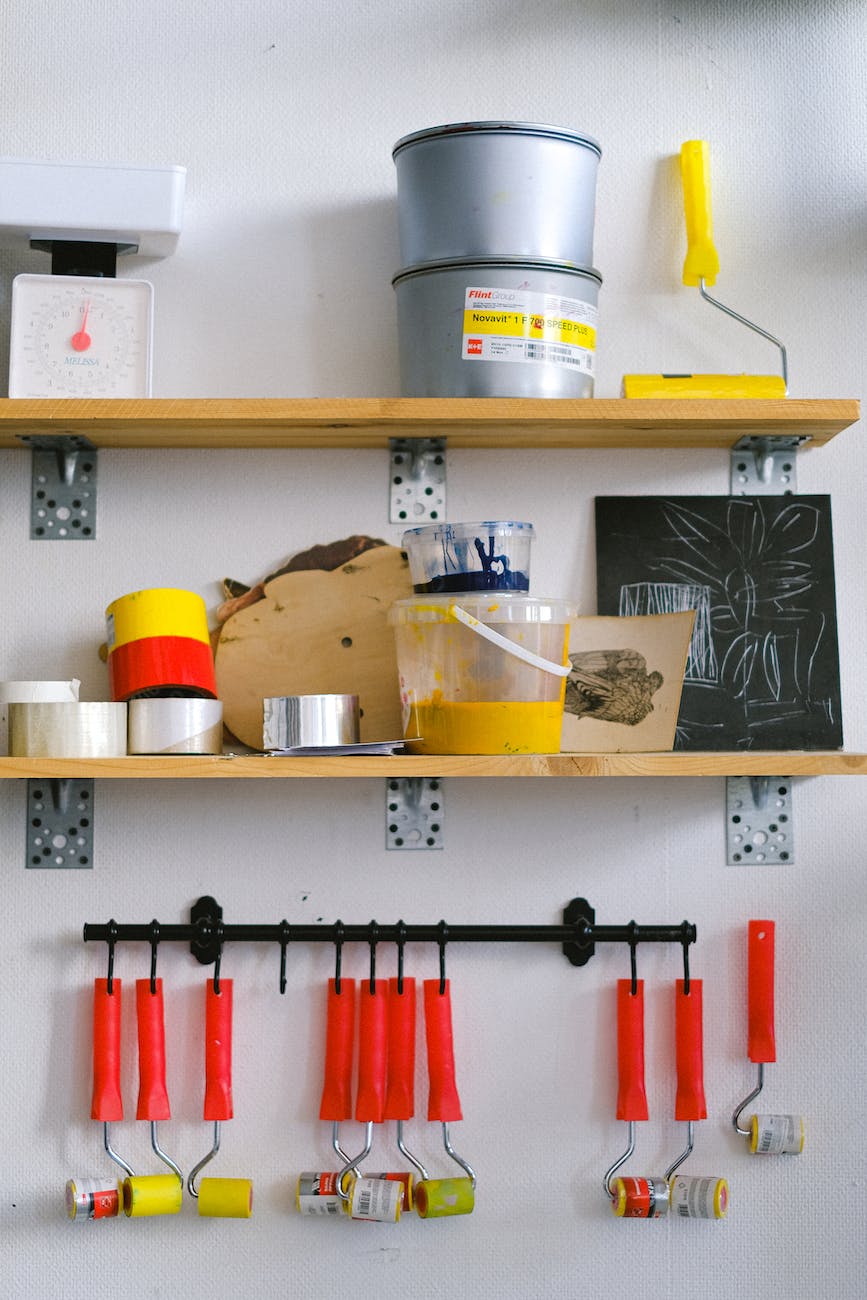
You should maintain the quality of your craft paints by storing them in a designated paint storage unit. A rotating organizer like the Craft Smart Paint Storage Spinner is an ideal choice. These units assist in organizing your paints for easy access and help in keeping them dry, which is crucial for preserving their quality.
Plydolex Army Painter
The Plydolex Army Painting Rack is a great storage solution and can store a variety of art supplies. It can store up to 74 paint bottles and 14 paint brushes. The organizer’s solid wood construction makes it durable and will last for many years. The Plydolex army painting wooden paint storage rack is a better option if you need a permanent solution to your paint and art supplies.
The right size Plydolex army paint rack is crucial. There are many sizes available so that you don’t run out paint storage space. The large holes make it easy to store larger bottles of paint, while the smaller holes can hold smaller ones.
The corner Plydolex storage rack for paint has 18 large holes to hold larger paint bottles. You can also use the fourteen smaller holes to store dropper-style paint containers. The rack’s design makes it easy to find paints and keeps them organized.
Citadel army painter
Dropper bottles are a great option for those looking to store their Citadel army colors. Dropper bottles work better than pots, and they will keep your paints from leaking, especially if your cat likes to mess up whenever he can. This paint storage solution has another advantage: It is compact. The 5mm thick PVC is light, waterproof, anti-corrosion and water-resistant. Although it is an excellent storage solution, it may not be compatible with all paints.
The Citadel paint set includes 48 pots of paint in three ranges: Shade, Layer, and Base. A sturdy plastic box holds two racks of twenty-one paints each. The lid has a handy tray that makes it easy for you to pick up and place the paints after use.
Citadel provides a paint storage system that is suitable for army painters. Modular design of the paint station allows you to store 30 different paints. The kit also comes with 7 paint brushes and a water bottle. The package also contains a painting guide. It is important to note that Citadel paint storage units may not be the only option on the market.
Citadel army paints are available in many gaming shops around the world. However, messy paints can result from pouring the paint into the pot. The paints will dry quicker if this is done. This is not recommended to paint large buildings or vehicles. This can cause more mess and dry paints faster.
- About the Author
- Latest Posts
Introducing Charles, the Editor in Chief at ByRetreat, whose passion for interior design and editorial excellence elevates every remote workspace to new heights. With his keen eye for detail, impeccable taste, and expertise in design, Charles brings a wealth of knowledge and creativity to the ByRetreat team.
As the Editor in Chief of a renowned lifestyle blog, Charles has honed his skills in curating captivating content and staying up-to-date with the latest trends in interior design. His deep understanding of aesthetics and the power of storytelling through design enables him to create remote workspaces that are not only visually stunning but also rich in personality and meaning.
Beginners Guides
How to Distress Your Kitchen Cabinets With Chalk Paint
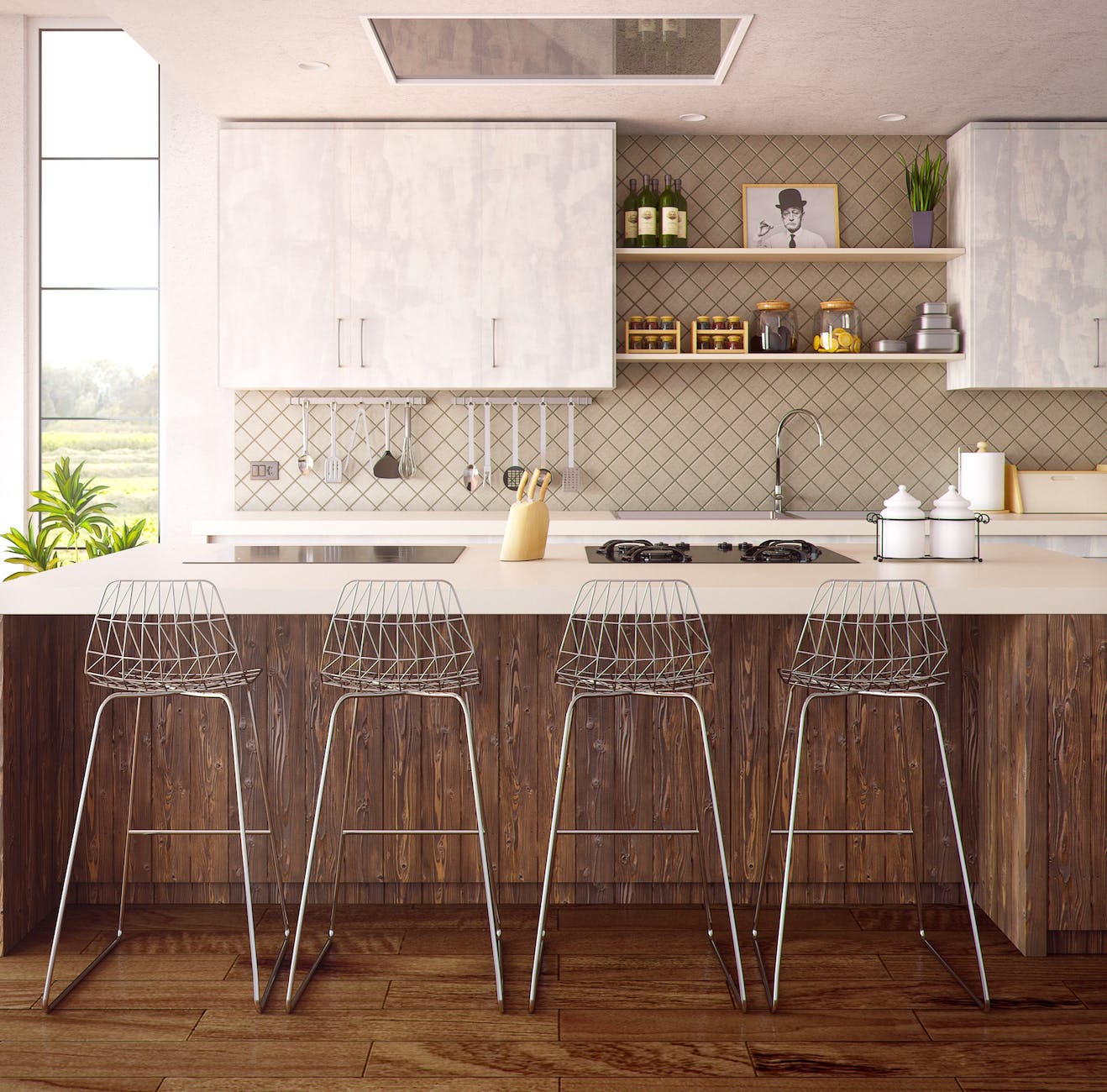
Chalk paint is the top option for achieving a distressed look on your kitchen cabinets. This environmentally-friendly, low VOC paint is simple to clean and can be applied with a sprayer or brush in a variety of colors.
You can distress your kitchen cabinets with chalk paint

You can distress your kitchen cabinets with Chalk Paint. This is a great method to update your kitchen decor. Chalk paint is a special type of flat paint that sticks to almost all surfaces. After the painting is complete, you’ll need to apply a protective coat. Varathane Water-based Top Coat Matte is an option to achieve a matte look.
Preparing your cabinets for painting is important. Wash them with soap and water before you start. If you find any areas that are not showing through, spot-priming might be required. You will need to paint two to three coats. To achieve distressed effects, you can layer more than one colour.
You can distress your kitchen cabinets using chalk paint to give them a matte finish. However, you should seal them with a protective wax. It will protect them from staining or scratching. This protects paint but needs to be maintained. Wax is not heat resistant so you may need to reapply it occasionally.
Preparation
Before you paint your kitchen cabinets with chalk paint, it is important to prepare them. The paint will dry completely in approximately two weeks. Before applying the second coat, it is important that the first coat has dried completely. You can seal the paint with a lacquer, or clear wax if you prefer a traditional mellow finish.
Clean the surface before you begin chalk paint kitchen cabinets preparation. Although you can apply the paint to almost any surface, it’s best to have a smooth one. Sand the cabinet surface before you apply the paint. Fill in any gaps. Prime any areas not covered by paint. Apply two coats or more of paint to cover the entire area. To prevent chipping, you can add a wax topcoat after the paint dries.
You may need to fill in any gouges or scratches that are deep and rough if the surface is bare. You can cover small imperfections because chalk paint is thicker and more durable than regular paint. The paint will leave a rough finish.
Dry time
It is important to understand the drying time of chalk paint before you begin to paint your kitchen cabinets. It’s likely that the first coat will be streaky, so use it as a primer before you apply the second coat.
Chalk paint can be used on kitchen cabinets easily. It is easy to transform your kitchen’s appearance without spending too much. You can select from multiple colors and apply multiple layers. To achieve a distressed look, you can also use milk paint.
You must clean your cabinets thoroughly before applying chalk paint. You can’t let the paint show through if you don’t clean your cabinets well. You can use a degreasing product to clean the cabinets. You can wipe the cabinets clean using shop cloths. Repeat this process several times.
Sealing
To ensure that chalk paint kitchen cabinets lasts a long time, it is important to seal them. You can paint your cabinets to create an elegant farmhouse appearance or practical reasons. You should sand any damaged or patched areas before applying the sealer.
To seal your cabinets, you can use wax or polycrylic. Although wax is not as durable as acrylic, it will not yellow over time. If you decide to stick with wax, you will need to apply it again every few months. If you live in an area with high traffic, polycrylic is the best choice.
To preserve the new look, seal them with clear wax or lacquer after the chalk paint has been applied. Waxes provide a warm and tactile finish. Water-based polycryics, however, are more flexible. Before applying the second coat, let the polycryics dry completely.
- About the Author
- Latest Posts
Introducing Ron, the home decor aficionado at ByRetreat, whose passion for creating beautiful and inviting spaces is at the heart of his work. With his deep knowledge of home decor and his innate sense of style, Ron brings a wealth of expertise and a keen eye for detail to the ByRetreat team.
Ron’s love for home decor goes beyond aesthetics; he understands that our surroundings play a significant role in our overall well-being and productivity. With this in mind, Ron is dedicated to transforming remote workspaces into havens of comfort, functionality, and beauty.
-
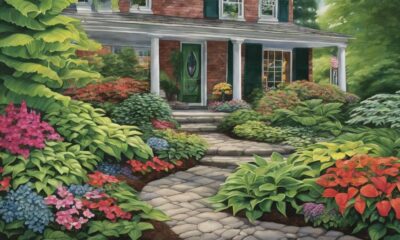
 Vetted23 hours ago
Vetted23 hours ago15 Best Plants to Thrive on the North Side of Your House – A Gardener's Guide
-

 Vetted1 week ago
Vetted1 week ago15 Best Boxwood Varieties for Thriving in Full Sunlight
-

 Vetted2 weeks ago
Vetted2 weeks ago15 Best Ways to Label Clothes for Nursing Home Residents – Stay Organized and Efficient
-

 Decor3 days ago
Decor3 days agoAre Home Decor Stores Profitable?
-

 Vetted1 week ago
Vetted1 week ago15 Best Dryer Vent Hoses to Keep Your Laundry Room Safe and Efficient
-

 Vetted1 week ago
Vetted1 week ago14 Best Cleaners for Aluminum Surfaces – Shine Bright Like a Diamond
-

 Vetted1 week ago
Vetted1 week ago15 Best Spider Sprays to Keep Your Home Arachnid-Free
-

 Vetted1 week ago
Vetted1 week ago15 Best Nightstand Charging Stations to Keep Your Devices Organized and Ready to Go








